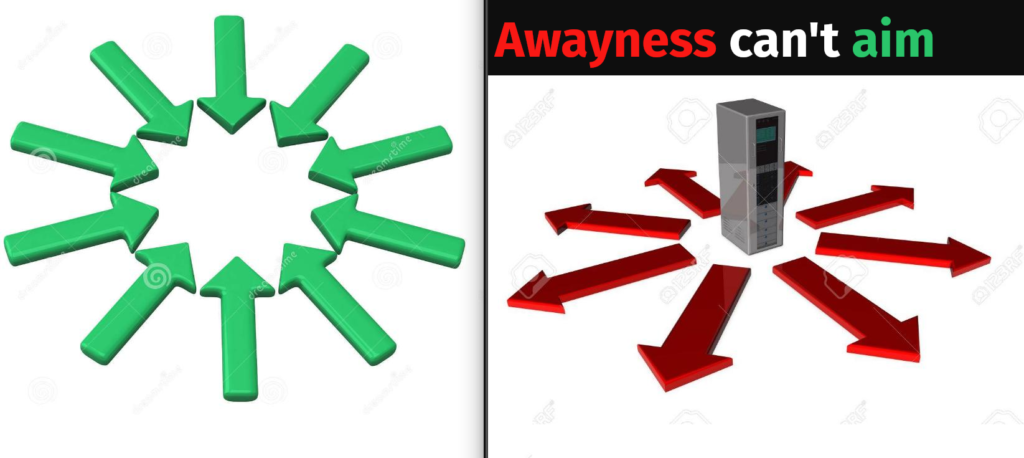What’s the difference between positive & negative motivation?
I like to talk about these as towardsness & awayness motivation, since positive & negative mean near-opposite things in this exact context depending on whether you’re using emotional language (where “negative” means “bad”, ie “awayness”) or systems theory language (where “negative” means “balancing” ie “towardsness”). I have a footnote on why this is.
There’s a very core difference between these two types, both inherently to any feedback system and specifics to human psychology implementation.
Part of the issue is (and this is why I say positive vs negative motivation are different in all systems) you fundamentally can’t aim awayness based motivation. In 1-dimensional systems, this is almost sorta kinda fine because there’s no aiming to do (as long as you don’t go past the repulsor). But in 2D (below) you can already see that “away” is basically everywhere:

Whereas with towardsness, you can hone in on what you actually want. As the number of dimensions gets large (and it’s huge for most interesting things like communication or creative problem-solving) the relative usefulness of awayness feedback gets tiny.
Imagine trying to steer someone to stop in one exact spot. You can place a ❤ beacon they’ll move towards, or an X beacon they’ll move away from. (Reverse for pirates I guess.)
In a hallway, you can kinda trap them in the middle of two Xs, or just put the ❤ in the exact spot.
» read the rest of this entry »